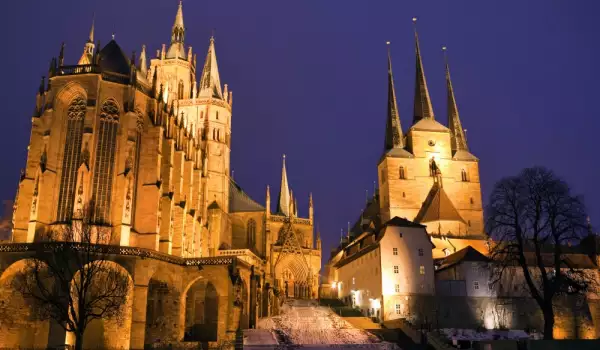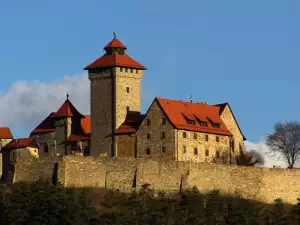Erfurt

Located in the central part of the country in the southern trough of the river Gera, only 40 kilometers from the geographical environment of Germany, Erfurt is not only the main city in the German federal state of Thuringia, but it is the largest city with a population of more than 200, 000 people. The strategic location of Erfurt in the central area of Germany is a key move for the city as it crosses many national and international transport connections.
The first historical evidence of the existing village of Erfurt have been dated back to 742. However, not very long after its founding, Erfurt stood in prosperity, and quickly became the regional center of Thuringia. However, despite that fact, until 1945 it did not participate in the political life of the province. Originally Erfurt was contained in the County Mainz.
Before that, the medieval town enjoys relative autonomy. In 1802 Erfurt became part of Prussia of which it belongs to until 1945.
There are three key points when talking about history and the cultural heritage of Erfurt. In this number enter the university, cathedral and the excellent preserved old town of Erfurt. The tourist tour of Erfurt means you can not miss any of these sites. The University of Erfurt was founded in 1392, which automatically makes it the third oldest university in Germany and one of the oldest in the territory of Central Europe.
Probably the most famous graduate of Erfurt university was Martin Luther. On the region of Thuringia and the city of Erfurt Martin Luther is known for his phrase "this is the center of downtown."
Erfurt has a long history as being the center of religion and Enlightenment in Germany. Catholic diocese in the city was founded back in early 742, the main temple of the Roman Catholic diocese is precisely the cathedral in Erfurt.
Erfurt cathedral is named after St. Mary and is located on the left side over the Church Square and the Church Norton Ghost is located right on Church Hill. The history of Erfurt Cathedral slope starts at the chapel built by Bishop Boniface in 742, it was fully built in the Gothic style an became this beautiful church in downtown Erfurt with its beautiful interior carvings and stained glass. Inside you can see, the Romance Madonna and bronze chandelier "Wolfram", dating from the Cathedral in 1160.
Norton Ghost Catholic Church in the very beginning was conceived as a church. Its foundations were laid in 1280, and was named Norton Ghost (St. Severus), bishop of Ravenna. His relics were moved to the temple in 836, while before that date he had worked at Benedictine Monastery of St. Paul.
The space of the church is divided into five equal parts high. Within this church in Erfurt you can see the sarcophagus of St. Severus which was built in 1365 to remove the life of the saint. Remarkable is also the stone statue of the Madonna, built in 1345 in St. Norton.
One of the main landmarks is the bridge, Kremerbrücke. Furthermore, do not forget to look at the long almost 3 square kilometers old-style media center in which stands about 25 parish churches and many urban houses. Particularly remarkable is the great bell, Glorioza, which is cast in 1497 and is still the largest functioning bell in Germany.
As the final stop of the sightseeing tours in Erfurt you can visit the magnificent medieval fortress Petersberg, where the lovely view opens to the beautiful old Erfurt. The castle was built from 1664 to 1707, and today much of its structure is still well preserved.









